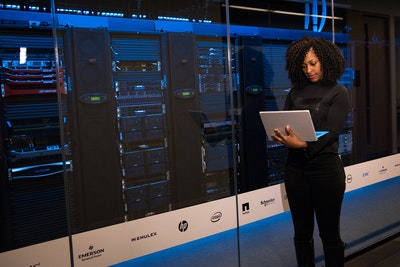R&D Tax Credit Software: History and Qualifications

The Research and Development (R&D) tax credit remains one of the best chances for firms in the United States to significantly lower their tax bill while at the same time increasing their profits.
Simply by carrying out their normal operations, businesses operating in various sectors can earn eligibility for this government-sponsored tax advantage.
Taxpaying enterprises that develop, design, or improve products, methods, formulas, or software are eligible to claim the Research and Development (R&D) tax credit, which is outlined in 26 United States Code section 41.
R&D Tax Credit Software:R&D Tax Credit Origin
The credit was first enacted in 1981 to boost the number of technical jobs in the United States by providing financial incentives to businesses that invested in research and development.
Because it is determined solely on the pay of the employees who conduct the qualifying labor, this distinction is the most critical tax advantage available to American firms. Additionally, it is available for use at both the state and federal levels, with over 30 states granting credits to offset the amount of state tax that must be paid.
The R&D tax credit is available to companies of any size, not just the large enterprises with research facilities. However, what qualifies as research and development for the credit is significantly broader than business owners realize. There is now a comprehensive list of eligible activities for the credit, such as procedures connected to applied sciences or other technological initiatives.
However, even though this tax credit has been available for many years, many companies are still unaware that the R&D credit eligibility extends beyond product development.
They include activities and operational processes such as the most up-to-date manufacturing techniques, software engineering, and quality enhancement. This is even though this credit has been available for many years. Even newly established businesses could potentially reduce their payroll tax liability by claiming the research and development tax credit for up to five years.
R&D Tax Credit Software: Applying For R&D Tax Credit
Filling out IRS Form 6765, Credit for Increasing Research Activities is required for companies eligible for the R&D Credit.
As part of the procedure, they must identify expenses that qualify for the deduction and produce sufficient paperwork that demonstrates how these charges satisfy the conditions outlined in Section 41 of the Internal Revenue Code. For this objective, such resources as financial records, business records, oral evidence, and technical publications may all be utilized.
Before applying, the company must first verify that it satisfies all conditions. The Research and Development Tax Credit guidebook as well as R&D Tax Credit Software provides in-depth direction on the kinds of activities and expenditures that are eligible for the credit.
In addition, the rules describe how to compute the credit and make a claim for it. You can also make use of R&D Tax Credit Software.
It is required that claims be submitted no later than twelve months after closing the books of accounts in which the expenses were incurred.
Entities Eligible for R&D Tax Credit Software
Before anything else, it’s essential to check whether or not your company is eligible for this credit. So, who is eligible? R&D credit eligibility covers a far more comprehensive range of activities and operations than many businesses know.
This applies to the development of new products and activities, and processes, including the creation of new production methods, software, and quality improvements.
Additionally, new businesses can be qualified to subtract the R&D tax credit from their payroll tax liability for up to five years.
Your company is eligible if:
- Invests both time and resources in the development of novel or ground-breaking products
- Enhances already existing products
- Hires engineers, designers, or scientists
- Develops products such as software, patents, prototypes, and methods
There is also the possibility of backdating R&D tax credits. You might be able to claim research and development tax credits for up to three open tax years in the past if you filed your tax return at the right time.
There is a possibility that loss firms will be able to return even further, and there are jurisdictions that permit retrospective claims for longer than three years.
R&D Tax Credit: Research and Development Qualifications
Any industry can conduct research and development. It happens everywhere, from cheese production to the creation of chemicals, from manufacturing to building renewable energy sources.
Qualified purpose
The action needs to be associated with developing better the functionality, quality, or reliability of a business component in some way.
Enhancing a product, method, software, technique, recipe, or idea is an example of how this might be done.
Inherently related to technology
The creation of the business component must be based on one of the hard sciences.
These types of sciences include physics, engineering, and chemistry, and they can also be related to life, biology, computer sciences, or computer sciences.
Removes technological uncertainty
When the organization was first planning or developing the commercial component, it must have been met with a degree of technological uncertainty.
A company must provide evidence that it has made an effort to reduce the amount of uncertainty surrounding the creation or improvement of a business component.
The existence of uncertainty is denoted by the fact that it has been established that the information at the company’s disposal does not show the capability or method for creating or upgrading the business component or the proper design of the business component.
The design of a project is rarely finalized at the beginning stages of development, even though many businesses feel optimistic about their capacity to meet technical goals or have a tried-and-true approach to discovering answers.
Experimentation
When the organization was first planning or developing the commercial component, it must have been met with a degree of technological uncertainty.
A corporation is required to provide evidence. These can be in modeling, simulation, systematic trial, error, or another approach. It can be anything that has analyzed one or more potential options to reach the intended result.
A recurrent trial and error process may be the natural progression of certain undertakings. Activities in engineering, software development, and clinical research, to name a few examples, all rely on a procedure that may evaluate one or more possible solutions.
The definition is also sufficiently all-encompassing to apply to various pursuits.






